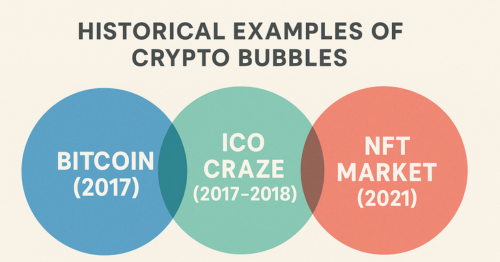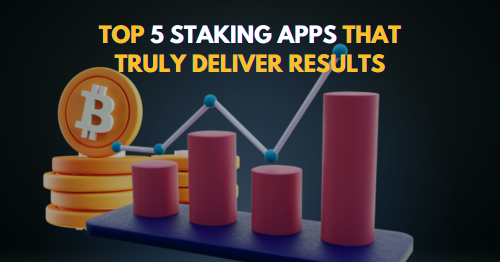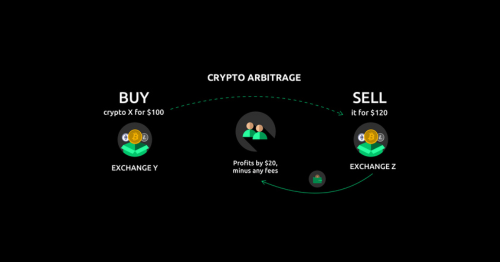
Crypto Bubbles Explained: Hidden Risks Behind the Hype
Crypto Bubbles Explained: Hidden Risks Behind the Hype. In the fast-evolving world of digital currency, crypto bubbles have become a recurring phenomenon that can shake markets and destroy fortunes. Understanding what crypto bubbles are and how they form is crucial for both new and experienced investors.
What Are Crypto Bubbles?
A crypto bubble occurs when the price of a cryptocurrency inflates rapidly due to speculation, far beyond its actual utility or value. This surge is typically fueled by media hype, investor enthusiasm, and a fear of missing out (FOMO). However, once confidence dips, the bubble bursts, causing prices to plummet.
The Anatomy of a Crypto Bubble
Understanding the structure of crypto bubbles can help you recognize the warning signs early.
1. Innovation and Early Adoption
Crypto bubbles often begin with real technological innovation, such as Bitcoin’s blockchain or Ethereum’s smart contracts. Early adopters see potential and invest.
Read All About: Blockchain And Smart Contracts
2. Speculation and Hype
As media coverage grows, so does public interest. Prices soar not based on fundamentals but on speculative momentum. Retail investors pile in, often without understanding the technology.
3. Overvaluation
The market becomes irrational. Coins with little real-world use may skyrocket in value. Promises of quick riches dominate discussions.
4. The Trigger Event
Eventually, reality sets in. A major security breach, regulatory announcement, or failure to meet expectations can cause panic. This triggers a massive sell-off.
5. The Crash
Prices collapse rapidly, wiping out billions in value. Investors who bought at the peak suffer major losses. Only the strongest projects survive the crash.
Historical Examples of Crypto Bubbles
Looking back, we find key examples of crypto bubbles that followed this pattern:

Bitcoin (2017)
Bitcoin’s price surged from under $1,000 to nearly $20,000 in one year. This bubble burst in early 2018, with the price crashing below $4,000.
ICO Craze (2017-2018)
Initial Coin Offerings (ICOs) raised billions with little regulation. When most projects failed to deliver, the bubble popped.
NFT Market (2021)
Non-fungible tokens (NFTs) exploded in value in 2021. By mid-2022, trading volumes had fallen by more than 90%, highlighting another burst bubble.
Why Crypto Bubbles Keep Happening
The cryptocurrency space is relatively young, speculative, and lacking traditional valuation metrics. These factors make it fertile ground for bubbles.
- Low Regulation: Less oversight attracts scams and pump-and-dump schemes.
- Mass Psychology: Fear and greed dominate investor behavior.
- Technological Hype: Breakthroughs attract massive attention, often without realistic analysis.
- 24/7 Global Markets: Crypto trades around the clock, magnifying volatility.
How to Identify a Crypto Bubble
Recognizing the signs early can help you avoid major losses:
- Parabolic Price Movements: If a coin’s price is rising exponentially, it’s often unsustainable.
- Unrealistic Promises: Be wary of projects promising guaranteed returns.
- Overwhelming Hype: If everyone is talking about it, the bubble may be near its peak.
- Weak Fundamentals: Many coins in bubbles have no real-world application or product.
The Impact of Crypto Bubbles
On Investors
Many retail investors buy in at the peak, only to lose a significant portion of their capital. Fear-driven decisions can lead to panic selling and regret.
On the Market
Widespread crashes reduce liquidity, damage confidence, and slow adoption. However, they can also clean up weak or fraudulent projects, allowing stronger ones to emerge.
On Regulation
Each crash typically invites more government scrutiny. While regulation can increase investor safety, it may also limit innovation.
Strategies to Avoid Getting Trapped
To steer clear of crypto bubbles, consider the following tips:
Do Your Own Research (DYOR)
Before investing, thoroughly analyze a coin’s purpose, team, technology, and community support.
Diversify Your Portfolio
Never invest all your funds into a single coin. Diversify your portfolio by investing in a range of assets and industries.
Set Realistic Expectations
Avoid chasing overnight gains. Long-term strategies tend to yield more sustainable returns.
Use Stop-Loss Orders
Protect your capital by setting sell limits if prices fall below a certain point.
Stay Updated
Track market news, regulatory changes, and global economic trends that could influence crypto prices.
Can Crypto Bubbles Be Beneficial?
Surprisingly, crypto bubbles sometimes have a silver lining. Although many projects fail, the attention and capital generated during a bubble often lead to long-term technological progress. For example:
- Post-2018 saw major improvements in blockchain scalability.
- DeFi (Decentralized Finance) emerged stronger after the ICO crash.
- The NFT downturn led to better smart contract standards and platforms.
The Future of Crypto and Market Bubbles
While crypto bubbles are likely to continue, the industry is gradually maturing. Increased regulation, institutional adoption, and clearer valuation metrics may reduce the frequency and severity of future bubbles.
However, human psychology remains unchanged. As long as speculative greed exists, so will bubbles. The key is to learn from each cycle and approach the crypto market with caution and clarity.
Conclusion
Crypto bubbles are an inevitable part of any emerging financial ecosystem. Instead of being rooted in real worth, these are fueled by hype, sentiment, and market noise. While they can lead to major losses, they also pave the way for innovation and better systems.
To navigate the crypto market successfully, investors must recognize the signs of a bubble, remain grounded in research, and focus on long-term strategies. Understanding crypto bubbles is not just about avoiding crashes. It’s about mastering the market’s emotional and economic cycles.
I work as a content writer in the blockchain and cryptocurrency domain. I have a keen interest in exploring the world of digital assets, Web3, and emerging crypto technologies. My goal is to provide readers with easy-to-understand, engaging, and trustworthy insights, helping them stay informed and confident in the rapidly evolving world of crypto and blockchain.






